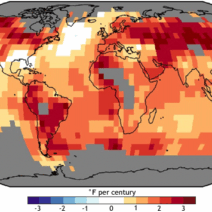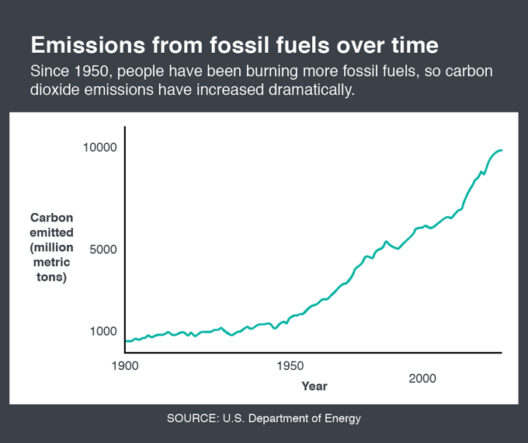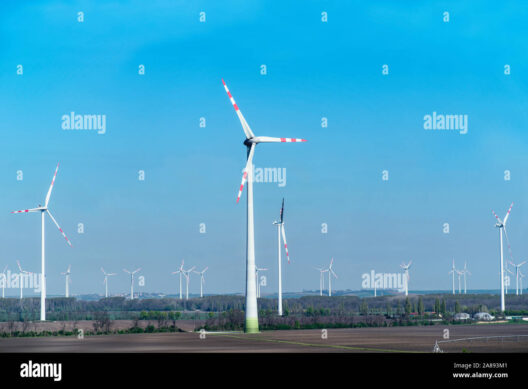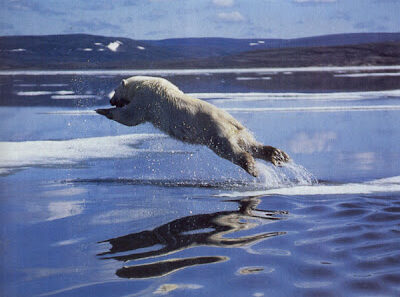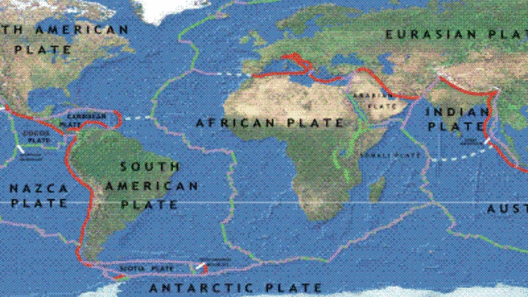Across our blue planet, a translucent veil envelops the Earth—a delicate blanket known as the atmosphere. Comprising a mixture of gases, this protective shroud is quintessential for life, providing essential elements such as oxygen while shielding us from the sun’s harsher elements. However, this seemingly benevolent cloak harbors an alarming paradox. As industrialization burgeons and human activities intensify, our atmospheric embrace is transforming into a sweltering straitjacket, exacerbating the specter of global warming. Herein lies an exploration of how our air blanket contributes to this pressing crisis, along with an examination of its implications.
To elucidate this phenomenon, one must first understand the composition of the atmosphere, which primarily consists of nitrogen (78%), oxygen (21%), and trace gases, including carbon dioxide (CO2) and methane (CH4). While these trace gases occupy a minuscule fraction of our atmosphere, they wield profound influence. Much like a painter’s brush on a canvas, these gases modulate the Earth’s temperature through the greenhouse effect, essentially trapping heat and warming the surface. It is critical to appreciate that without this natural greenhouse effect, Earth would be inhospitably frigid—an icy wasteland rather than the vibrant abode we cherish.
However, the steady accumulation of greenhouse gases due to anthropogenic endeavors redirects this effective mechanism toward perilous extremes. Fossil fuel combustion, deforestation, and agricultural practices inject copious amounts of CO2 and methane into the air, swelling the very blanket that once nurtured us. This is not merely a matter of altering weather patterns; it represents a breakdown of the finely tuned equilibrium that sustains life. Realizing the implications of this spiraling imbalance is essential to grasping the irreversible tide of climate change.
As the atmosphere thickens from these excess emissions, Earth’s radiative balance is disrupted. Solar energy, which should be reflected or absorbed at a controlled rate, becomes trapped, leading to a gradual increase in surface temperatures. This phenomenon is palpable; glaciers are receding, sea levels are rising, and extreme weather events are intensifying. The warmth that was once bestowed upon the Earth as a nurturing touch is now like the suffocating embrace of a giant hand. The seasons, too, become erratic, with spring creeping in earlier and winter’s grasp weakening, disrupting ecosystems long accustomed to seasonable rhymes.
One cannot overlook the impacts of temperature elevation on biodiversity. The atmosphere, that air blanket which cradles the myriad forms of life on Earth, is simultaneously a stage for evolutionary drama. Species that once thrived in specific climatic conditions find themselves at the precipice of survival. Habitats are altered, migrations are disrupted, and the delicate interdependence among species is jeopardized. Coral reefs, the vibrant underwater cities, are succumbing to bleaching due to warmer sea temperatures, signaling the catastrophic fragility of marine ecosystems.
This intricate dance between atmospheric dynamics and ecological balance accentuates the urgency of understanding and countering global warming. However, the crisis extends beyond the sphere of natural systems. Societal fabric is intricately woven to the fate of the atmosphere, impacting agricultural productivity, water resources, and human health. The atmosphere’s embrace is not just a warm hug; it has become a constricting coil as droughts and floods wreak havoc on food supplies, exacerbating hunger and social unrest.
In addressing global warming, multifaceted strategies emerge as essential. Mitigating the deleterious effects of greenhouse gas emissions involves a collective commitment to renewable energy sources—solar, wind, and hydroelectric power present alternatives to fossil fuel reliance. These alternatives not only alleviate the pressure on our air blanket but also herald a new era of sustainability, where human ingenuity aligns harmoniously with the demand for environmental stewardship.
Moreover, amplifying afforestation and reforestation initiatives can prove pivotal. Trees serve as nature’s lungs, absorbing carbon dioxide and releasing oxygen, thus acting as vital buffers against climate change. Supporting policies that encourage sustainable forestry practices and wildlife conservation can rejuvenate our atmosphere while respecting the inherent value of ecosystems.
In addition, the shift toward sustainable agricultural practices is imperative. Regenerative agriculture, which focuses on restoring soil health and employing holistic land management, can reduce emissions and enhance carbon sequestration. The cultivation of perennial crops and composting enriches soil while diminishing dependence on chemical fertilizers, thus lessening their atmospheric impact.
The discourse surrounding climate change must also embrace the power of collective action and education. Engaging communities in environmental initiatives fosters an ethos of stewardship. Awareness campaigns can inspire individuals to reduce their carbon footprint, evoking a sense of responsibility towards the atmosphere—as citizens of Earth, we must nurture the blanket that nurtures us.
Ultimately, the atmosphere’s embrace serves as a poignant reminder of the interlinked fates of humanity and the biosphere. It is both a protective shield and a fragile frontier—one that invites us to acknowledge our complicity in its degradation. As the consequences of our actions manifest in palpable ways, the collective endeavor to mend our air blanket becomes not merely an option but a necessity. The future of our planet rests not solely in the hands of policymakers but in the conscientious choices of individuals, communities, and societies at large. Through vigilance, innovation, and a commitment to sustainable practices, we can persevere in restoring balance within our atmosphere, ensuring that it remains a nurturing embrace rather than a suffocating shroud.
